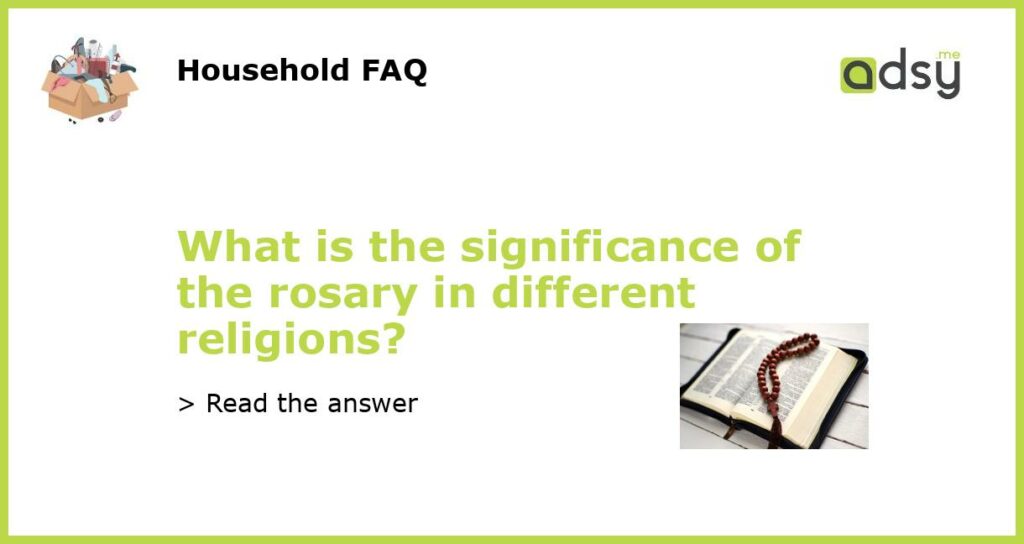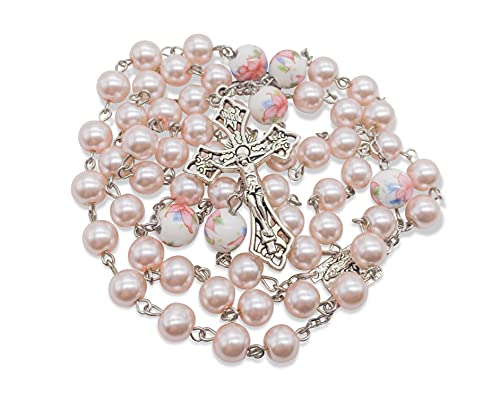The Significance of the Rosary in Different Religions
The rosary is a significant spiritual tool that is commonly associated with the Catholic faith. However, its use extends beyond Catholicism and has a deep significance in different religions around the world. Whether it is the Catholic rosary, Islamic tasbih, or Buddhist prayer beads, the rosary serves as a means of prayer, meditation, and connection with the divine for millions of people. In this article, we will explore the significance of the rosary in different religions.
The Catholic Rosary
In the Catholic faith, the rosary is a powerful tool for prayer and devotion. It consists of a string of beads and a crucifix, and is used to meditate on the life, death, and resurrection of Jesus Christ. Catholics believe that by reciting prayers such as the Our Father and the Hail Mary, while contemplating the mysteries of Christ, they can experience spiritual transformation and draw closer to God. The rosary is often used in group settings, but many Catholics also incorporate it into their personal prayer routine. It is seen as a way to honor the Virgin Mary and seek her intercession.
The Islamic Tasbih
In Islam, the tasbih is a string of beads that is used for dhikr, which is the remembrance of God. It is a form of meditation and prayer that involves the repetitive recitation of phrases such as “Subhan Allah” (Glory be to God), “Alhamdulillah” (Praise be to God), and “Allahu Akbar” (God is the greatest). The tasbih typically consists of 99 beads, which symbolize the 99 names of God in Islam. Muslims believe that the tasbih helps them to focus their thoughts, enhance their connection with God, and cultivate a sense of peace and tranquility. It is often used during personal prayer or in group settings, such as after congregational prayers in the mosque.
The Buddhist Prayer Beads
In Buddhism, prayer beads are known as mala or japa mala. They are used to count the recitations of mantras, which are sacred words or phrases that are believed to have spiritual power. The most well-known mantra in Buddhism is “Om Mani Padme Hum,” which is associated with the bodhisattva of compassion, Avalokiteshvara. The beads are usually made from materials such as wood, seeds, or gemstones, and are used in a similar way to the Catholic and Islamic rosaries. Buddhists believe that the repetitive recitation of mantras while using the prayer beads can help to focus the mind, cultivate mindfulness, and generate positive energy. It is a common practice among Buddhist monks, nuns, and laypeople.
The Universal Significance
While the significance of the rosary may vary across different religions, there are common threads that unite them all. The use of prayer beads promotes a sense of mindfulness, focus, and connection with the divine. It provides a tangible way to engage with spiritual practice and aid in meditation. The repetitive nature of counting beads and reciting prayers or mantras is believed to quiet the mind and open the heart, allowing individuals to experience a deeper sense of peace, clarity, and spiritual awakening. Whether it is the Catholic rosary, Islamic tasbih, or Buddhist prayer beads, the rosary serves as a powerful tool for spiritual growth, contemplation, and connection with the divine in different religions around the world.






